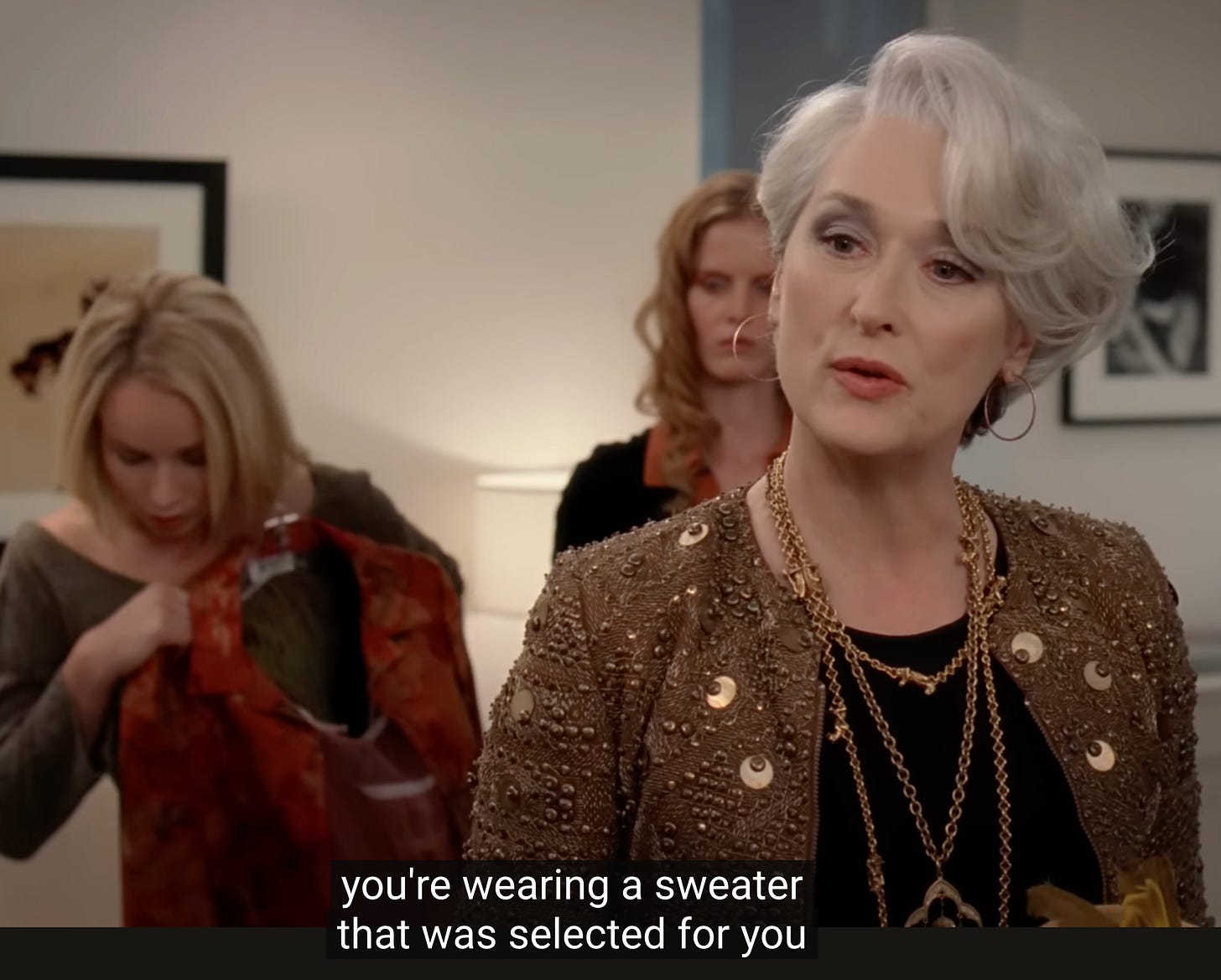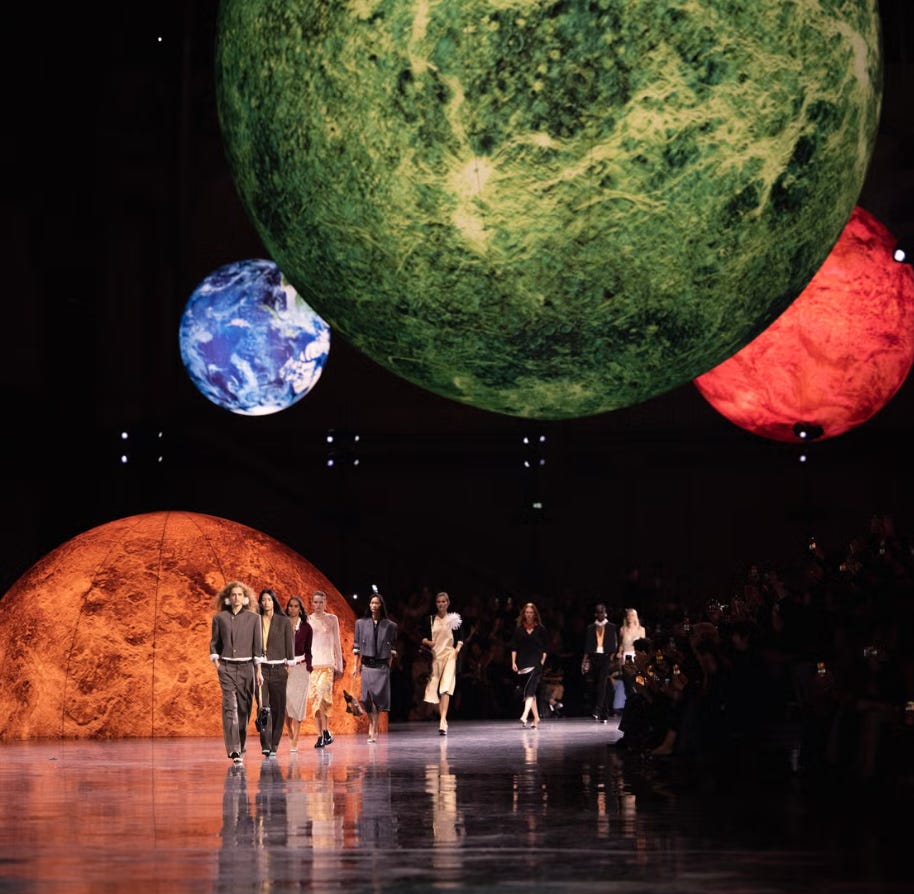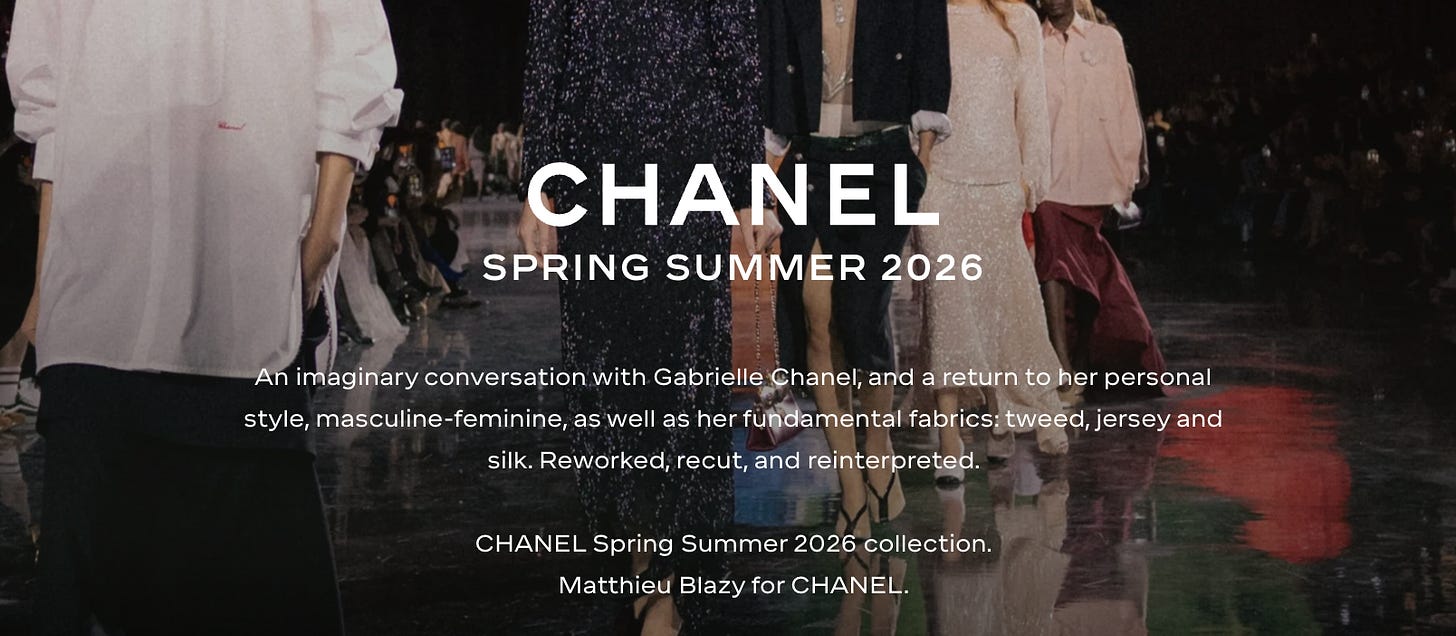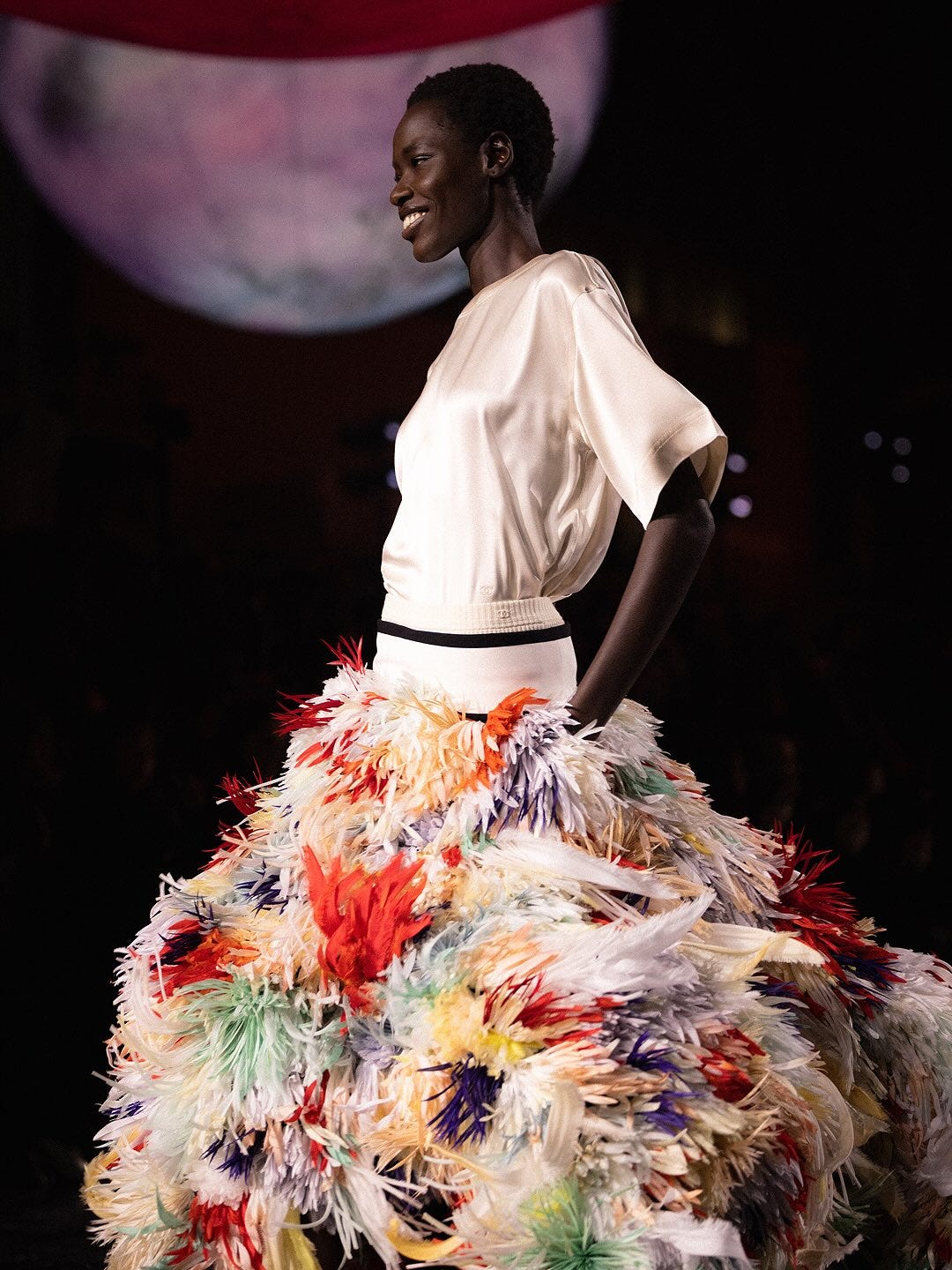If You Don’t Consider Yourself a Fashion Person…
You should still care about what happened in Paris this month — and here’s why.
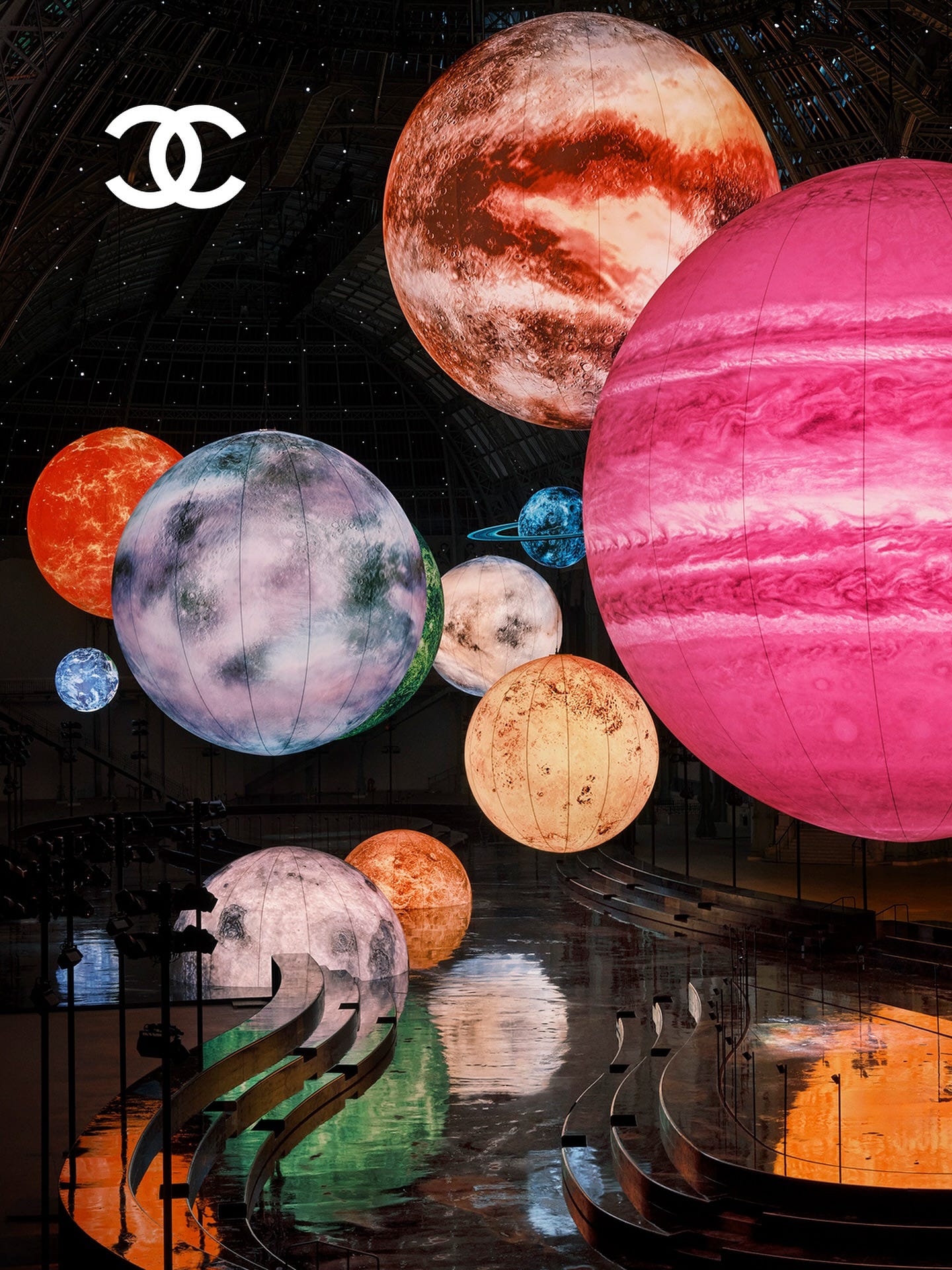
You don’t consider yourself a fashion person. You’re following zero influencers, and you mostly shop mid-market brands. You probably think Paris Fashion Week has absolutely nothing to do with you or your life, à la Andy (in The Devil Wears Prada).
And yet, just like Andy, you’re wrong. Here’s why you should still care about what happened this month in Paris, even if it’s solely to not give the impression you live under a rock.
What happens at Paris Fashion Week doesn’t just live on runways, magazines and luxury stores. It quietly decides what our stores, ads, and even moods will look like for the next year. It trickles down in vibe, aesthetics, and what you’ll see on the racks in Zara.
When the shows become soft, sensual, or reflective, that feeling shows up in campaigns, store windows, and suddenly, even a Target ad feels more muted, poetic, or minimalist.
Creative director musical chairs!
This Fashion Week presented Spring-Summer 2026, but it mostly introduced change - and plenty of it, as 15 major creative directors moved between houses, reshuffling the scene.
There’s a lot at stake from cultural, commercial, and legacy standpoints, but we will not cover that right now.
Each new designer subtly (or boldly - who said Jean Paul Gaultier?) rewrites fashion’s vocabulary, whether through proportions, textures, or colors. Within a few months, the mid-market translates it.
More than trends, it’s cultural language. And so whether you shop Chanel or H&M (or anything - and there’s a lot - in between), this wave of designer reshuffling changes what we all want to wear.
Luxury brands make the cultural weather.
Mid-market brands sell the forecasted season.
Here’s what it all adds up to: when Paris changes hands, it changes everything downstream - not just what people buy, but what they believe looks good right now. And that’s a big deal, isn’t it?
Let’s take a look at how that chaos actually played out on the runway:
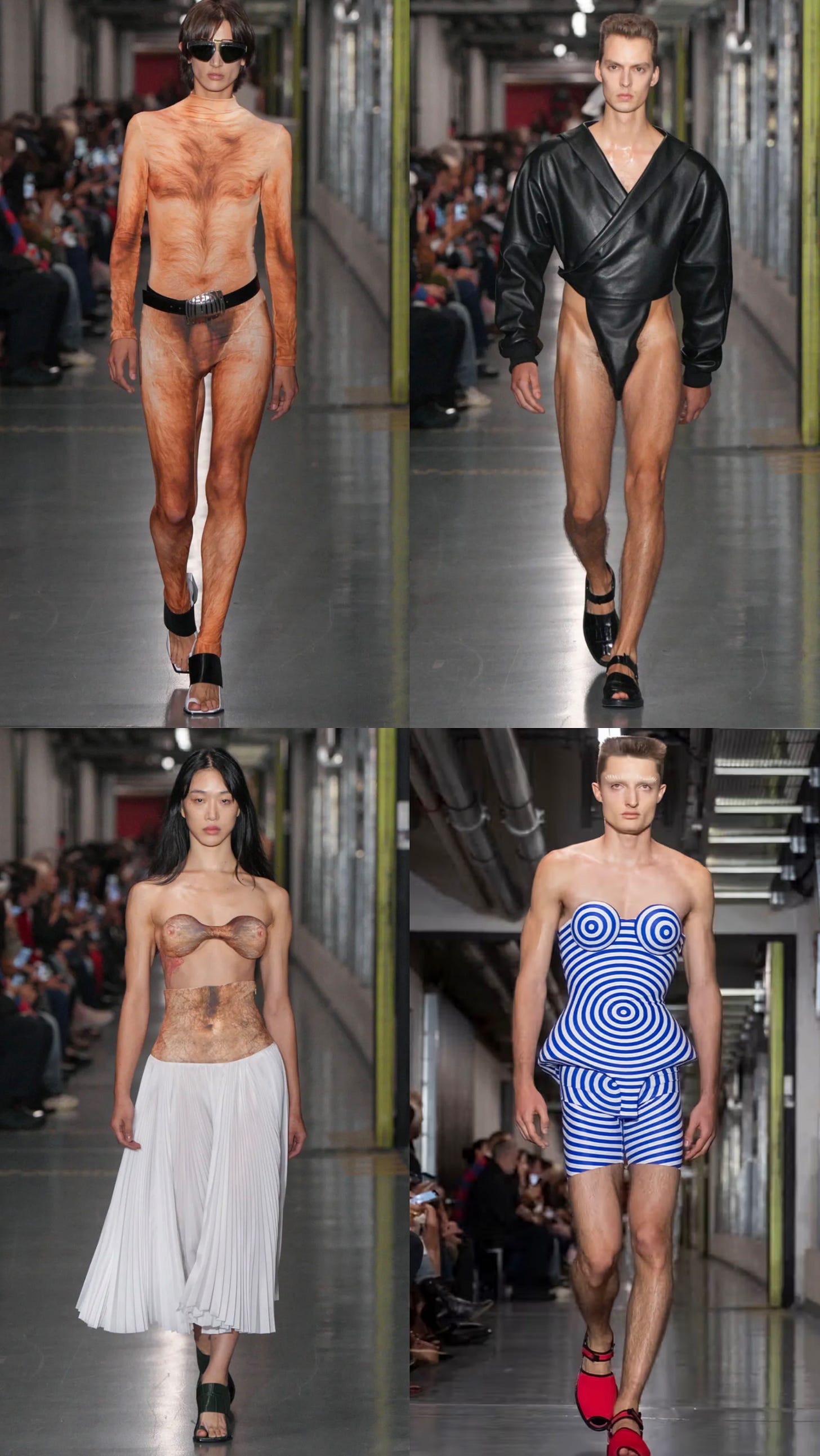
I’m curious to see how this energy will translate onto the commercial floor (curious and concerned).
It was hard to ignore one of the most talked-about debuts (as we’ve established, there were quite a few) - Duran Lantink’s first collection for Jean Paul Gaultier.
However, it was equally funny to watch how quickly the buzz around this show evaporated. For a few hours, it was everywhere - provocative (to some) and impossible to ignore. But by the next morning, it was gone. Surprised at first, I realized that makes sense, in today’s oversaturated world, a gimmicky show cannot and will not leave a lasting impression.
What will? Emotion.
Why did the influencers cry?
It sounds a bit much, doesn’t it? To be moved so much by a runway show, to shed a tear? It sounded like too much to me. But then I watched it. And I felt it.
Your Comfort, Your Armor
The artistry and technique Matthieu Blazy brings to every house (previously at Bottega Veneta) — his way with silhouettes, his play with materials — were all there. In a way, nothing less could be expected of him; however, it’s no easy task to reimagine the tweed jacket, the two-tone shoes, the Chanel handbag.
But more than that, it was about redefining what it means to be a modern woman. What Blazy did wasn’t about the gorgeous gowns, jewelry, and coveted bags; it was really about the feel. To me, it read: grounded, sensual, real.
Blazy told The Business of Fashion, “the whole company of Chanel is based on a love story,” and I believe we all felt that love in the looks that could take a woman from errands to cocktails, chic in her cropped, logo-free men’s jacket. These are clothes built for comfort and for armor: easy to wear, yet powerful enough to shield a woman from the world. She’s dressed for it — and ready for it.
The show notes themselves frame this debut beautifully: “An imaginary conversation with Gabrielle Chanel.” It’s a deliberate return to the woman behind the name — not the brand, the bag, or the perfume, but Gabrielle herself. By calling her by her full name, Blazy brings her spirit back into focus - the creative, complex woman who started it all.
Another thoughtful nuance can be found in the signature: “Matthieu Blazy for Chanel,” not “Chanel by Matthieu Blazy”. There’s a subtle statement of respect: a designer lending his vision to a legacy, not claiming it as his own. It’s an intentional humility that stands in stark contrast to Duran Lantink’s unapologetic “I’m not entering the archive.” Blazy approached heritage as dialogue, connection. Lantink treated it as a constraint.
If I had to sum up his vision in one word, it would be seen — and isn’t that what we crave most? Maybe that’s what explains the tears: joy from the woman who can actually live in these clothes, and emotion from the fashion lover who felt understood - who recognized herself in his vision of modern femininity.
Blazy’s first act left the entire fashion community buzzing with a shared sense of excitement and renewal. I can’t wait to see where Act Two takes us.



